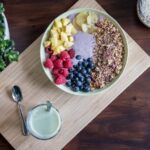Intermittent fasting is a key element in a healthy eating pattern. The body needs a high-quality source of energy and nutrient-dense foods are necessary for this purpose. Avoid processed foods and stay away from sugar-sweetened beverages. Eat smaller portions throughout the day to avoid overeating. Keep reusable water bottles in your car or purse to avoid grabbing unhealthy snacks. Try a healthy eating check-up to find out what your eating habits are.
Intermittent fasting is a healthy eating pattern
If you’re considering intermittent fasting as a way to lose weight, you should first speak with your doctor. Your doctor will consider your current health, your medications, and your medical history when determining the best program for your needs. You should also consider the types of foods that you eat during fasting days and feast days. You might also need to make dietary adjustments for specific chronic conditions that you may be dealing with.
Although intermittent fasting may seem like a great way to shed pounds, it can be difficult to stick to in the long run. It’s difficult to eat a large meal so close to bedtime, and some people find it hard to stay motivated to do it. Several other health risks can arise from a lack of nutrients. Lack of nutrients can lead to health issues, including cancer and immune system problems. While intermittent fasting may sound appealing, it’s important to remember that it’s an eating plan, not a diet.
The basic concept of intermittent fasting is that you alternate periods of eating and fasting. A fast day involves eating four to eight hours and fasting for a few hours. The second day involves eating one small meal in the morning and another one on the other day. This cycle can take several days. While a fast of 16 hours is great for some people, others may need to cut their fasting period down to four hours or less.
When starting an intermittent fasting plan, it’s a good idea to follow the guidelines first. Fasting for a whole day means that you eat about 500 calories, while a fast of two days requires a much smaller meal. You should focus on high-fiber and protein foods, which help you fill up while limiting your calorie intake. Regardless of your choice, it’s important to follow the rules carefully and make sure you’re eating enough for a healthy diet.
Incorporating intermittent fasting into your diet is important to your overall health. While the method may seem to be difficult to follow, it may have benefits that are not immediately apparent. It’s important to understand that fasting causes major changes in the body’s nervous system and hormone production. As such, it’s important to create a balanced menu plan and manage portion size. You’ll be surprised at the benefits you’ll experience when you follow this diet.
Nutrient-dense foods are part of a healthy eating pattern
Adding nutrient-dense foods to your diet is a great way to increase your vitamin and mineral intake without putting on excess weight. Nutrient-dense foods are generally low in calories and are packed with beneficial nutrients. Whole grain products are especially nutritious because they contain more nutrients than refined grains. Whole grains are also rich in dietary fiber, magnesium, zinc, phosphorus, selenium, riboflavin, and vitamin A.
If you eat fast food, consider substituting the sour cream for plain non-fat Greek yogurt. If you eat a lot of meat, consider adding vegetables or fruits to the mix. Instead of snacking on sweet treats, try crunchy vegetables or naturally sweet fruits. By swapping these foods with other low-calorie snacks, you can boost the nutrient-dense food content of your meals.
Many beverages are not nutrient-dense. While they can be a part of a healthy eating pattern, they add additional calories without any nutritional value. While water is a calorie-free beverage, it is best to choose beverages that are high in nutrients such as fruits, vegetables, and whole grains. Coffee, for example, barely contains any calories if you don’t add sugar and cream to it. Additionally, coffee shops often add added sugar and fat to their drinks, so you’re not getting any nutritional benefit from it.
While a few foods are high in nutrients, there are other more complex foods that are low in nutrients. Various vegetables, seafood, and beans and peas are all great sources of nutrients. Low-fat or fat-free dairy products and soy products should be included in your diet. Additionally, you should try to incorporate nutrient-dense foods in your diet in the proper proportions.
The way foods are prepared also has an impact on the nutrient content. Frying adds extra calories to the meal and lowers the nutrient content. For example, two yogurts may have the same amount of calories but contain 50 percent more nutrients. It’s important to choose foods rich in vitamins and minerals to enhance your health and prevent chronic diseases. If you’re unsure what to choose, read the Nutrition Facts label on each product.
Fruits and vegetables are part of a healthy eating pattern
There are hundreds of plant compounds found in fruits and vegetables. A wide variety of fruit and vegetables provides the body with a varied mix of nutrients and beneficial plant chemicals. Moreover, eating a variety of fruits and vegetables will provide your plate with an attractive meal. Fresh fruit is preferred over juiced or canned versions as they have less sugar and are better for your health. You can prepare salads, stir-fries and soups by adding more fruits and vegetables to your cooking.
Consuming fruit and vegetables may reduce the risk of stroke and heart disease. A systematic review of 26 observational studies in the United States found that high-fruit and vegetable intake was associated with a reduced risk of lung cancer, oropharyngeal and laryngeal cancers. But there were no such associations with other types of cancer, such as those of the digestive and lymphatic systems.
Eating fruits and vegetables is also beneficial for your digestive health. It provides antioxidants, which help in the repair of damage caused by free radicals and may protect against certain types of cancer. In addition to that, it has positive effects on your digestion due to the polyphenols contained in them, which change the microecology of the gut. You can learn more about healthy eating by accessing the numerous nutrition resources available online.
Researchers have linked fruits and vegetables with a reduced risk of prostate cancer. These benefits have also been noted in tomato-based products. Moreover, the carotenoids in tomatoes are believed to protect against mouth and throat cancer. Further research is needed to confirm these findings. However, research into the link between fruits and vegetables and cancer has started to focus on specific fruit and vegetables and their relationship with type 2 diabetes and cardiovascular disease.
You can eat various types of fruits and vegetables and reduce your intake of refined carbohydrates. Try to consume whole grains and low-fat milk instead of sugary and high-fat dairy products. For proteins, choose lean meats and poultry without the skin. If you do eat meat, choose white meat four to five times more than red meat. If you want to consume more protein, you should limit your intake of saturated fat, trans fats, sodium, and sugar.
Low-fat foods are part of a healthy eating pattern
There are benefits to a low-fat diet, but it’s important to remember that you shouldn’t be deprived of any of your favorite foods. While avoiding saturated and trans fats may be part of a healthy eating plan, eating a variety of healthy fats is a better choice. These fats help maintain healthy cell growth, protect organs and regulate blood pressure. By severely reducing your intake of these fats, you’ll limit many of your body’s key health benefits and leave your body devoid of essential nutrients.
When choosing foods, choose lean meats and fish. Avoid high-fat products like granola and pastries. Trim visible fat from meats and poultry before cooking. When cooking, opt for oven-baked, roasted or broiling poultry instead of deep-frying. Choose cooking methods that don’t add extra fat, such as vegetable oil or non-hydrogenated oils.
Drinking plenty of water can be a part of a healthy eating plan. Beverages with added sugar should be avoided. Water is a calorie-free beverage, but fruit juice and coffee are nutrient-dense. Drink coffee in moderation and switch to decaf coffee and herbal tea instead. Low-fat yogurt and fruit are also excellent choices. You can also opt for fresh fruit instead of sugary desserts. Low-fat dairy products contain natural sugars and nutrients that are important for a healthy diet.
Trans-fats can be dangerous to your health. Although these fats have been phased out in many products, they still lurk in some processed foods. For example, the ingredients in potato chips and baked goods are high in saturated fat. To reduce your intake of these foods, choose low-fat dairy products, trim off the skin from chicken and avoid foods with high amounts of saturated fats. You should also check the Nutrition Facts label of your favorite foods.
Dark-green vegetables are also recommended, such as canned, frozen, and iceberg lettuce. Red and orange vegetables include red peppers, tomatoes, carrots, and sweet potatoes. Starchy vegetables include white potatoes, corn, and green peas. Other vegetables include onions and iceberg lettuce. If you’re trying to lose weight, consider incorporating more vegetables. In addition to fruits, you can also eat some low-fat dairy products.









